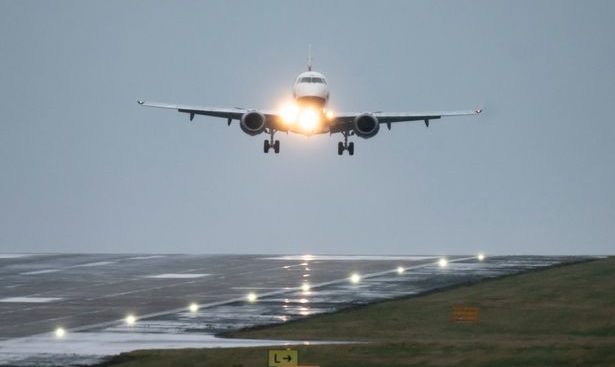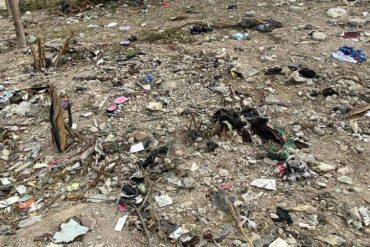The race to deliver the first operational uncrewed fighter jet is heating up, with competing visions for both the aircraft themselves and models for industrial production now starting to take shape.
California-based General Atomics Aeronautical Systems (GA-ASI) is a finalist in the US Air Force’s (USAF’s) Collaborative Combat Aircraft (CCA) Increment 1 contest to produce the service’s first uncrewed fighter – with that new family of aircraft recently bestowed the designation “FQ” by the Pentagon.
Speaking to FlightGlobal at the recent Avalon air show in Geelong, Australia, GA-ASI laid out key details for its CCA – dubbed YFQ-42A by the USAF – and the company’s strategy for assembling the jets in large numbers.
“This is arguably the most modular aircraft we’ve ever built, and intentionally so,” says C. Mark Brinkley, director of strategic communications at GA-ASI.
The uncrewed aircraft manufacturer has been delivering combat capable platforms for some three decades, including mainstays such as the MQ-9A Reaper and trailblazing MQ-1 Predator, which revolutionised modern warfare.
While Brinkley says the company’s previous designs were generally tailored for the specific role of medium-altitude surveillance and air-to-ground strike, the new GA-ASI CCA is being designed “from the beginning with modularity and with the future in mind”.
What that means in practical terms is building not just a new aircraft, but also designing an entire production system to support it.
Brinkley says GA-ASI took inspiration from the automotive sector, where seemingly disparate vehicles often use core components that are common to one another, and in some cases even share production lines.
“They design so that those sub-components can turn left and be a pick-up truck, and turn right and be an SUV,” he notes.
In aerospace terms, that means a central CCA core that will represent 70-80% of any GA-ASI fighter. The remaining 20-30% of each aircraft will come in the form of payload packages and required modifications for missions including air superiority, air-to-ground strike, electronic warfare or intelligence, surveillance and reconnaissance.
For now, that core will come in the form the of the XQ-67 Onboard Sensing Station, which General Atomics revealed in 2024.
Brinkley says the YFQ-42A shares 80% commonality with the XQ-67, with the gap owing to the addition of armaments and an air-to-air combat role for the CCA type.
“When you look at our centralised core concept and our ability to pivot from one platform to the next for mission sets, it’s not like anything that you’re seeing in any of the other offerings,” Brinkley says.
“They are building airplanes and we are building a war fighting concept,” he adds.
Although his remarks were not specifically directed, the commentary appears targeted at Anduril, GA-ASI’s primary rival in the CCA Increment 1 competition.
The start-up entrant into the defence industry began life as a developer of autonomy software, subsequently building out a product line of hardware that includes small UAVs, submersibles and the Fury autonomous jet – a derivative of which was selected by the USAF to be the YFQ-44A competitive prototype for CCA Increment 1.
A full-scale model of that aircraft was on display at Avalon, its first such appearance overseas.
Anduril has made so-called “hyperscale” production the core of its pitch, seeking to deliver thousands of autonomous systems per year across its various product lines. Less is known about the Fury aircraft itself, although Anduril officials have touted a focus on commercially available components and minimal maintenance needs.
“Design for simplicity, design for low maintenance, design for low sustainment [needs] has to be on the drawing board at the very beginning,” said Andrew Van Timmeren, Anduril’s senior director of air dominance systems, at the Air & Space Forces Association Warfare Symposium in March.
Presumably, such high volume production will require a larger degree of design standardisation than is being pursued by GA-ASI, with its modular core approach.
Brinkley says his company already boasts the ability to assemble 18 production representative CCA aircraft per month, using existing GA-ASI industrial capacity. The company has some 5 million square feet of manufacturing space available to expand production beyond that current level of 216 CCAs annually.
Other design approaches being taken by GA-ASI include a modular propulsion system. Brinkley says the company’s CCA common core will currently accommodate 13 different commercially available jet engines.
One of those engines will propel the YFQ-42A on its first sortie later this year. The USAF says it expects to log the initial flight of the two YFQ prototypes sometime in the North America
The summer months will also see the first overseas appearance of the GA-ASI CCA design, which Brinkley says will take place at the Paris air show in June. A model of the type was previously displayed at the 2024 Air Space Cyber conference near Washington, DC.
The appearance of the two YFQ designs at international air shows indicates the potentially significant overseas business opportunities for both GA-ASI and Anduril, regardless of which firm prevails in the initial CCA contest.
Washington has left open the possibility of exporting the first generation of CCAs through the USA’s Foreign Military Sales system, which supplies governments across the world with armaments.
Australia is poised to offer an early sales opportunity, with the head of capabilities for the Royal Australian Air Force saying at Avalon he plans to deliver a report to Canberra by the end of this year outlining options for uncrewed fighter procurement.
Such a list will almost certainly include the Boeing MQ-28 Ghost Bat – designed and assembled locally in Australia – but will likely also feature the exportable CCA designs being matured by the USAF.
Brinkley notes GA-ASI is very comfortable with the US export process, already supplying military aircraft to numerous overseas customers.
As a starting point, he says the company expects to offer the YFQ-42A configuration, which was previously confirmed by the USAF to be focused on air-to-air combat, but will use its modular core concept to offer a range of other capabilities.
“We’re not doing this for the first time,” Brinkley says. “This is not full of risk. This is risk that’s been bought down over 30 years,” he adds, referencing the company’s track record of delivering reliable uncrewed combat aircraft.




